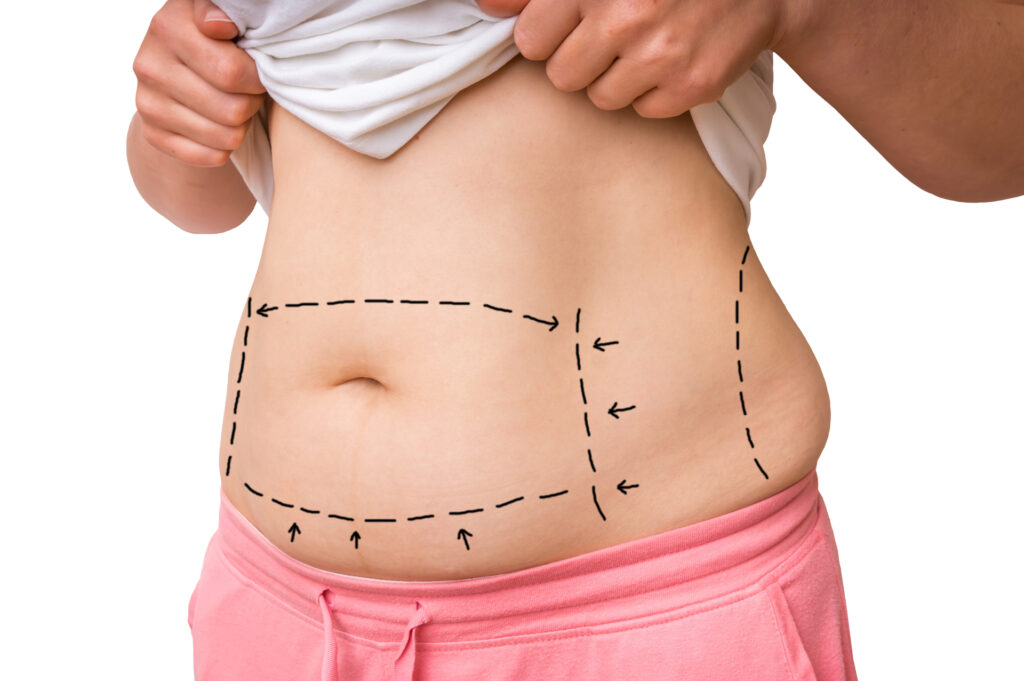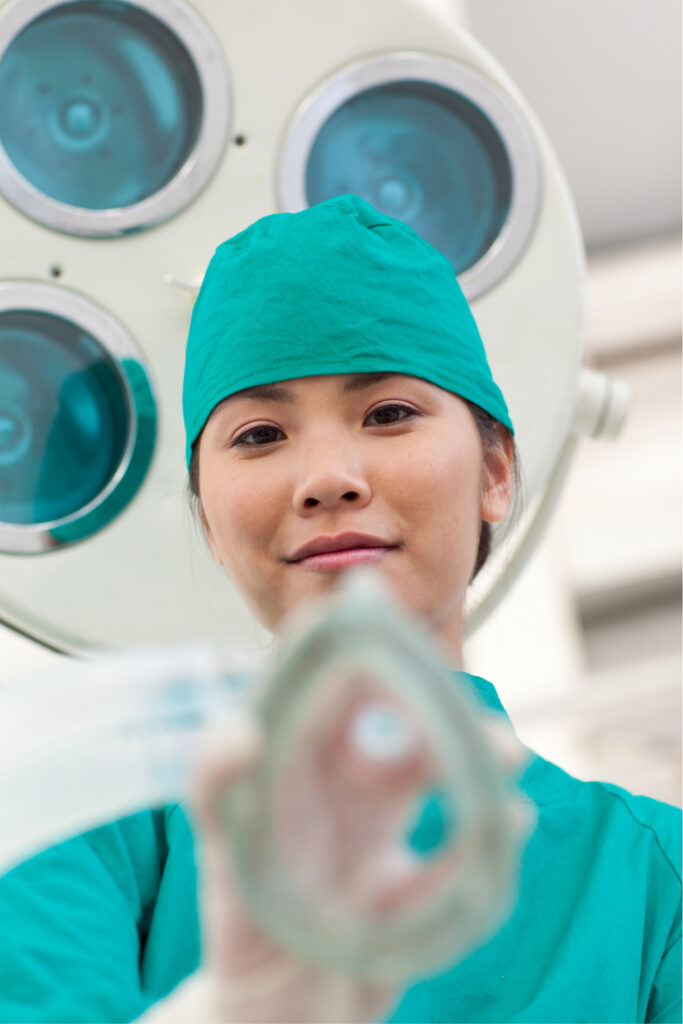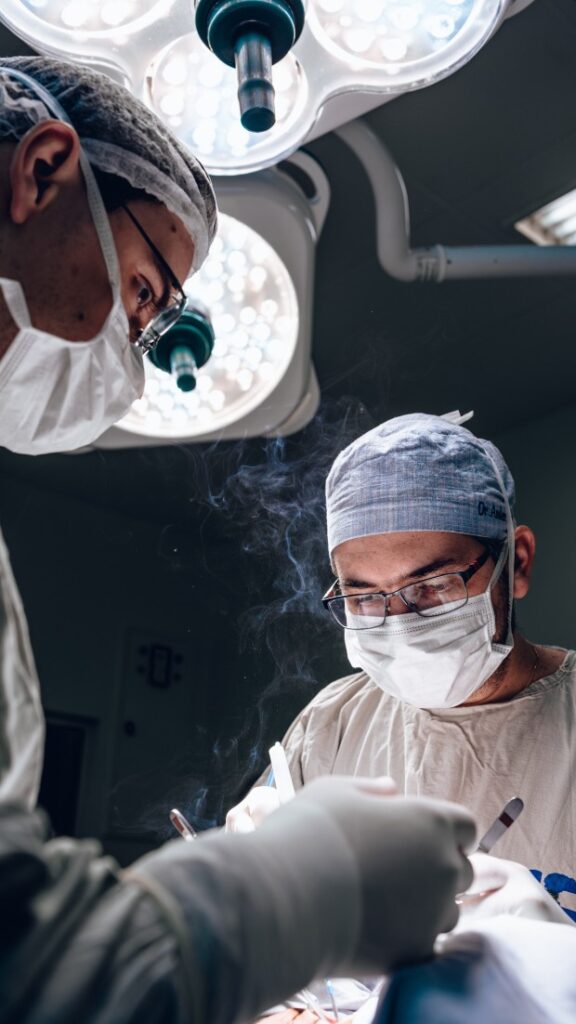Tummy Tuck O Abdominoplasty
Abdominoplasty (tummy tuck) involves the removal of excess abdominal skin and fat, as well as the correction of muscle flaccidity. This excess skin and relaxation of the abdominal wall normally occur in patients that have experienced a sudden change in their weight, such as a weight increase or loss within a short period of time, or women who have had several pregnancies.
Abdominoplasty and mini-abdominoplasty are procedures that help achieve a flatter, firmer abdomen, with a narrower waist


Anesthesia, hospitalization and Recovery
General anesthesia is widely used for an abdominoplasty, which means you will be asleep until the end of the Tummy Tuck Cosmetic Surgery.
During the first days after surgery, the abdomen is usually inflamed, and you may feel some discomfort or pain which is easily controlled with medication. Depending on the area covered by the surgery, you may go home after a few hours or you will have to remain in the clinic for one or two days. The surgeon will give you instructions for showering and changing the bandages. Although at the beginning you must not stretch completely, you must begin to walk as soon as possible. External stitches will be removed from five to seven days after the surgery, while internal stitches, whose ends are visible at the edges of the incision, will be removed from two to three weeks after the procedure. On the other hand, the bandage will be replaced by an abdominal girdle.
Possible complications
Our surgeons are highly qualified to prevent any post-operatory complication. In the case of an abdominoplasty, the risks may be:
Infections.- All our patients are medicated with the respective antibiotics, according to the type or surgery they have undergone. This prevents any type of infection and reduces the possible infections of the procedure to a minimum.
Adverse reactions to anesthesia.
All patients must go through a pre-surgical process, and must undergo the following tests:
Complete blood and urine tests, radiology, cardiology, and pulmonology tests, among others. These tests reduce the possibility of irregularities during surgery and subsequently.
Formation of venous blood clots, which may be prevented by moving the legs and getting up from bed as soon as the surgery allows.
A poor healing process may produce a poor quality scar which, sometimes, may require a second surgery. Smokers must stop smoking a few weeks before the surgery, and must be warned that smoking increases the possibility of complications and delays healing.
Tummy Tuck Cosmetic Surgery
Abdominoplasty is performed through a long incision from one hip to the other, just above the pubis. When the work in this area is over, the surgeon makes a second incision around the button belly, to separate the tissues that surround it.
Mini-abdominoplasty calls for a much smaller incision above the pubis, and the incision around the button belly is not necessary, as in some cases it may be lowered when the skin is tightened.
The skin of abdominal wall is then separated upwards, until it is at the height of the ribs, exposing the abdominal muscles. These muscles are tightened and joined in the midline, resulting in a firm abdominal wall and a narrower waist. The separated skin is tightened towards the pubis, and the excess skin is removed, while the belly button is placed in its new position. The surgeon finally sutures and places a bandage and a provisional drainage pipe to remove the excess fluids which may accumulate in the operated zone. In mini-abdominoplasty, the surgeon only separates the skin between the incision and the button belly, removes the excess skin, and sutures.
A full abdominoplasty usually takes between two and four hours, depending on the amount of correction necessary, while the duration of a mini-abdominoplasty ranges from one to 2 hours.

Posibles complicaciones
Nuestros cirujanos se encuentran altamente calificados para prevenir cualquier complicación post operatoria; en el caso de una abdominoplastia, los riesgos que podrían presentarse son;
Infecciones: Todos nuestros pacientes son medicados con los respectivos antibióticos y según el tipo de cirugía a la que se va a someter, de esta manera se previene cualquier tipo de infección y se reduce al mínimo las posibilidades de su aparición.
Reacciones a la anestesia: Todos los pacientes son sometidos a un control pre-operatorio, realizándoles controles cardiológicos, neumológicos, radiológicos, así como análisis de sangre y orina los cuales reducen las posibilidades de que se presenten irregularidades durante o después de la intervención quirúrgica
Aparición de trombos venosos, los cuales se previenen moviendo las piernas y levantándose tan pronto como lo permita la cirugía.
Una mala cicatrización puede producir una cicatriz de mala calidad que, a veces, precisará una segunda cirugía. Los fumadores deben dejar de fumar unas semanas antes de la cirugía y deben ser advertidos de que el tabaco aumenta la posibilidad de complicaciones y retrasa la cicatrización.
Our Feminizing Body Procedures are shown below
Comprehensive Medical Packages
All our patients receive ongoing support before and after surgery
Benefits for our patients
Want to know, what is our Facial feminization surgery cost? All our facial and body feminization surgeries are in our medical packages, we have designed a care system that allows us to take care of you from your arrival in our city, we have in addition to our team of surgeons, collaborators who support us to provide you with the best Nursing and assistance.

We know what it is to travel to another country in search of this dream and how exciting is a transition of gender and its different stages and processes. Constant emotional support because we know what feminization surgeries mean to you.
- Accommodation in Apartment
- 24-hour personal assistance
- Mobile phone at your disposal without additional cost
- Airport-hotel-clinic-medical consultation transportation
- Preferential medical visits during the hospitalization
- Medical preoperative
- Additional services at your request
